From 19 to 23 July 2021, Tsinghua University's Lifelong Learning Lab held a special summer camp for more than 20 children aged 7 to 10. The theme of the event was "Kids in Charge - Building the Future" and it was the first phase of the Lifelong Learners’ Programme. The children came to the Lab to build and program the MINDSTORMS® Brainstorm EV3 robotics, use their own ideas to solve problems in life, regrading food, clothing, housing and transportation. All the young warriors who came to the "Future Island" were unique and worked together in the warehouse and skills learning workshop to create fun and practical projects over the past few days, earning smart badges and tickets, so that they could return to the real world. Here are what each of the group has made!
Overview
Monday | Meet the motor
Tuesday | A touch of sensor
Wednesday|Hi to the color sensor
Thursday|Arrive the ultrasonic sensor
Friday | Presentation day for Kids in Charge
Work Show
Group1 Football Robot ⚽️
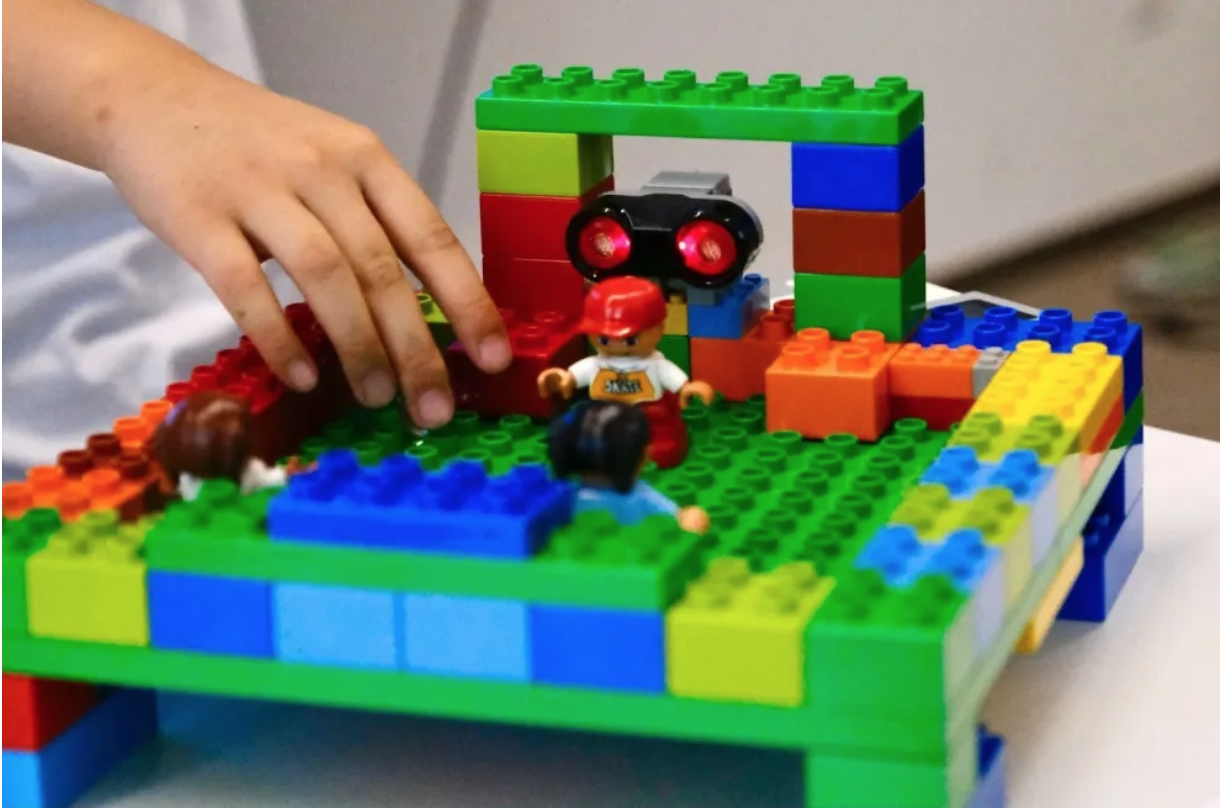
Want to add some colour to a hard-earned goal? A few footballers made an eagle-eyed goalkeeping project to help the Olympics. Using the Duplo chunk and the EV3 robot kit, they put together a smart pitch that uses ultrasonic sensors to detect movements near the goal in real time, not only to help the referee count, but also to cheer loudly when a goal is scored!
Group2 Sweeper Robot
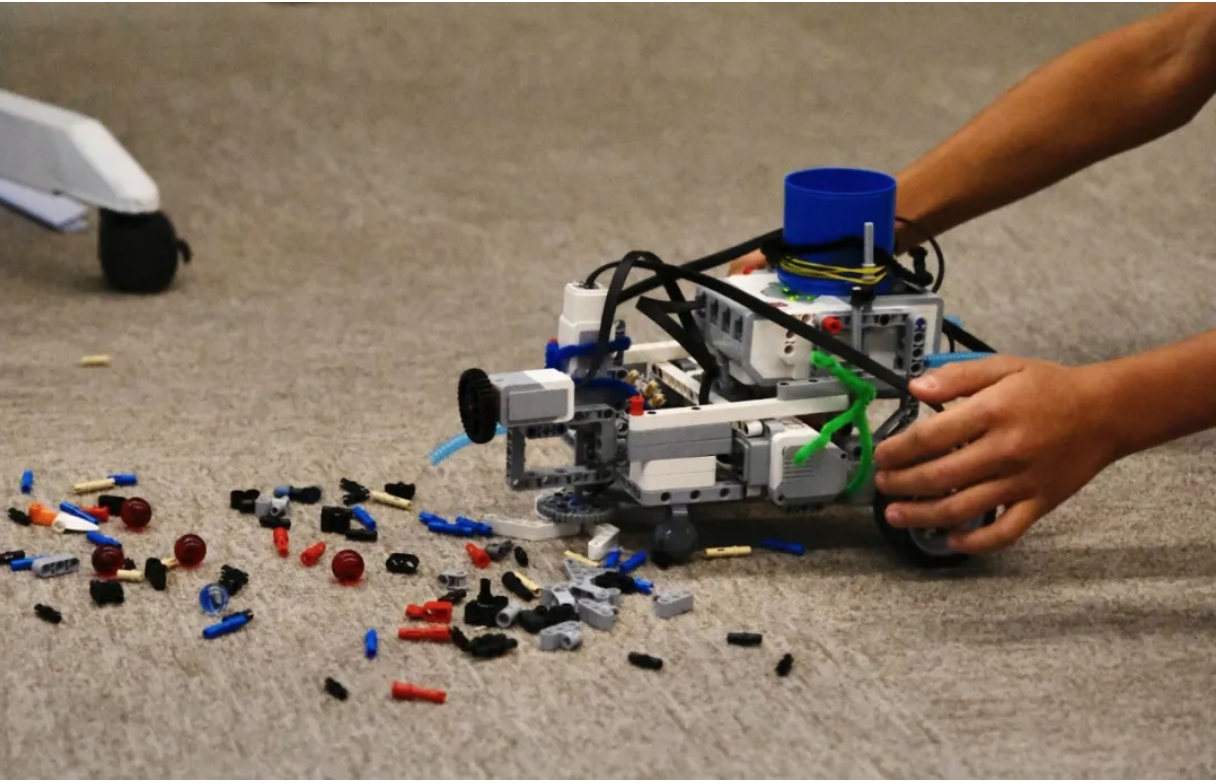
What if the house is too messy? The clever little team members made a sweeping robot, adding interchangeable heads to it, as well as designing a blue frame on top of the car to hold rubbish and a hose in front of the car to sprinkle water. As for inside the house, the little robot is a trailblazer and a great helper for sweeping up parts, and if it is on the road, it can sweep up rubbish and sprinkle water at the same time; and when placed on a farm, it can also help with sowing and harvesting. A simple robot that solves three problems of various topics - domestic, commercial and agricultural - and now I can finally have some fun when mum tells me to sweep the floor!
Group3 Bionic Robot
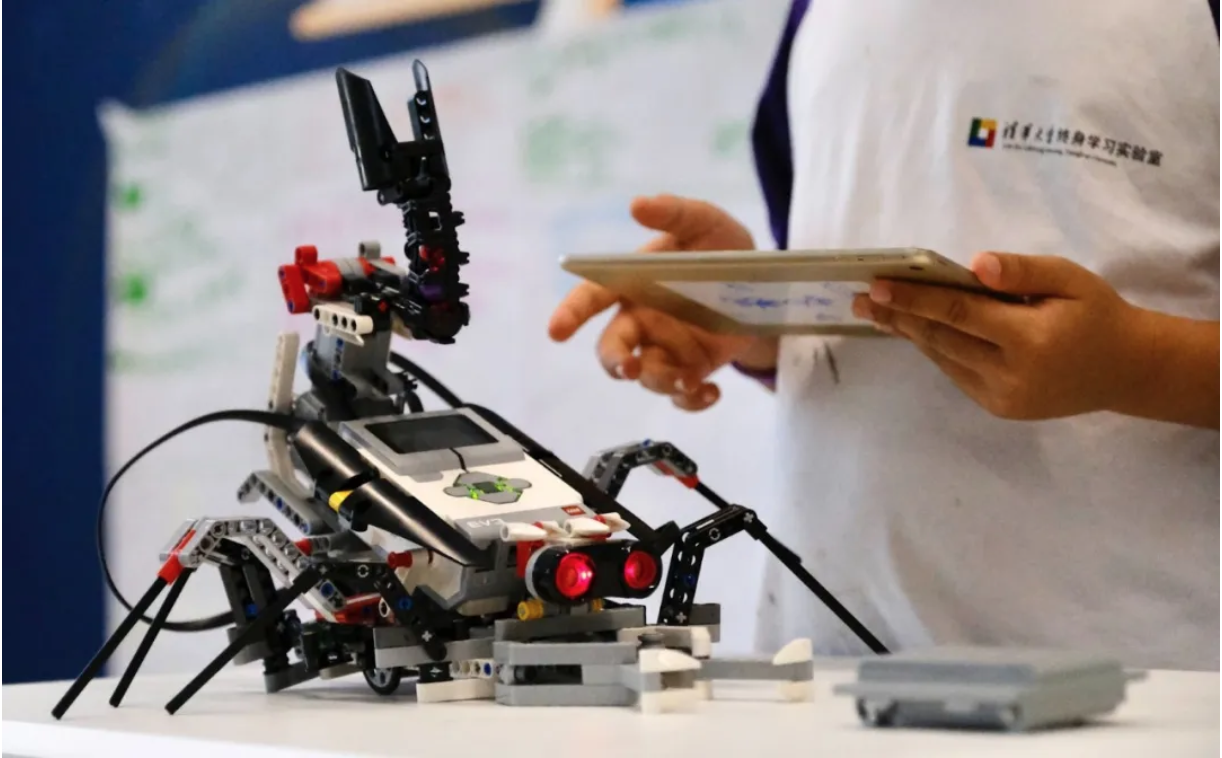
A scorpion-like robot that walks on eight legs and is strong enough to scare the rats in the farmyard. The kids have created a bionic robot that has functionalities of dispersion, attack and collection: it uses ultrasonic sensors to avoid obstacles in front of it and also fires marbles precisely when it hits an attack target. And the little warriors decided not to leave dead mice in the field - after each attack, the dead mouse recovery vehicle cruises through the field, picking up the dead mice one by one using its pincers to avoid viral infection from human contact.
Group4 Fire Robot
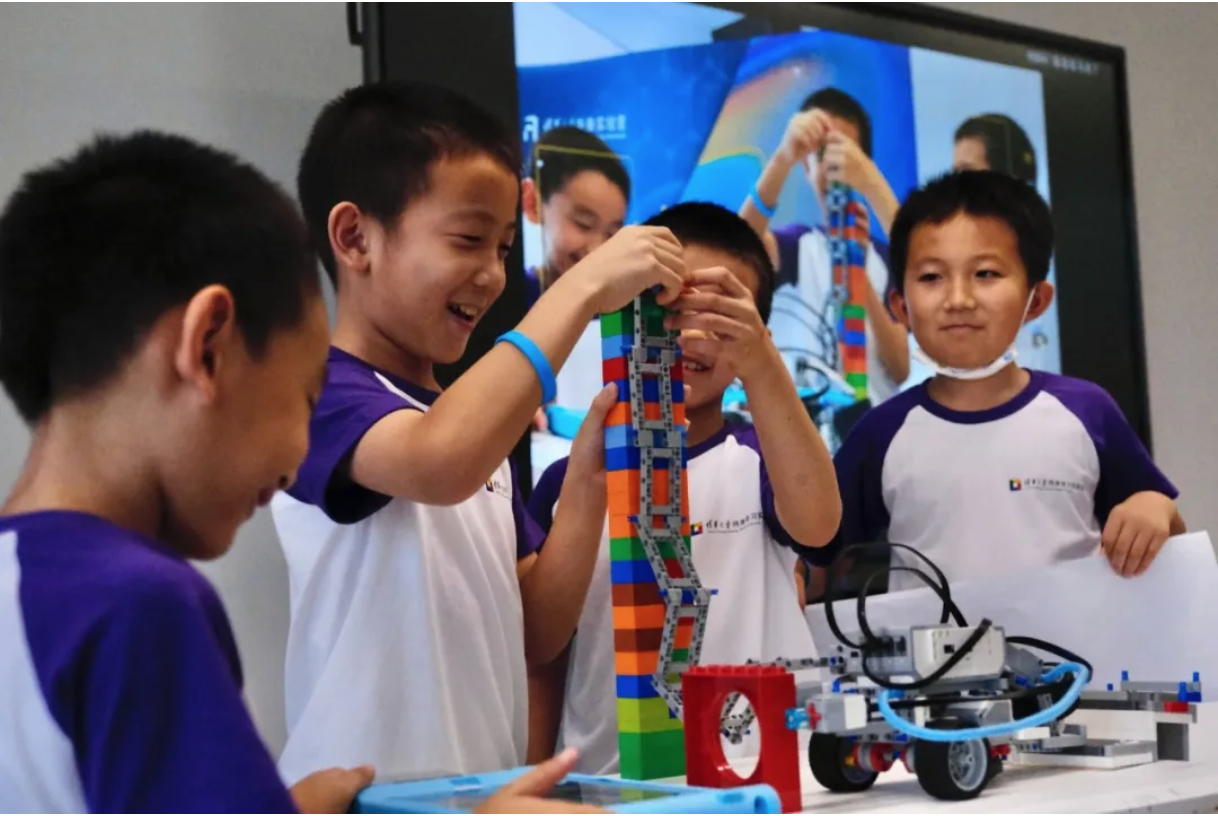
As there are lots of rainstorms recently, the kids are watching and worrying about the people who suffers from the disaster, and they have always wanted to do something to help with saving lifes and fixing the broken facailities. So they worked together to build a firefighting robot that can accurately identify the source of a fire, deploy a ladder immediately to save the victims, and leave parts for engineers to rebuild after the rescue. The ladder is a key of the project, as it can be rolled up when idle and can be changed in length and shape at any time, allowing it to be used both for evacuating people in difficult environments and for rescue in water!
Group5 Transport robot
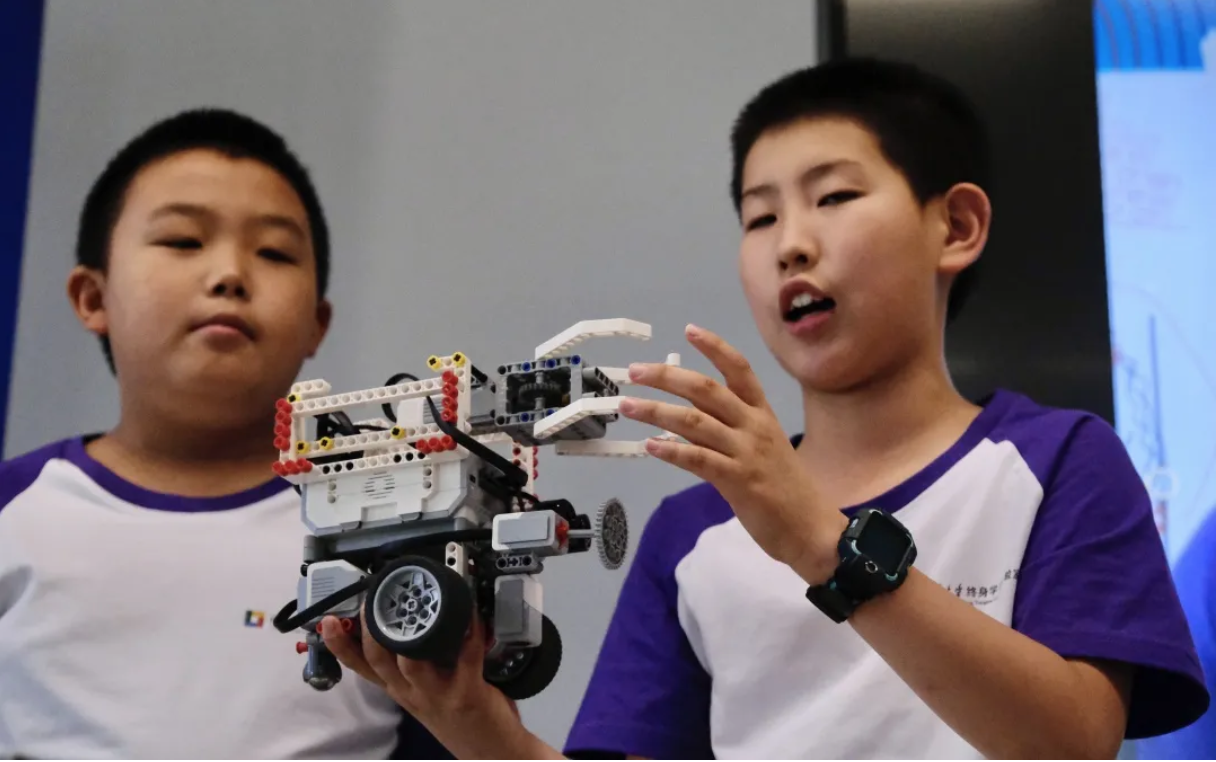
The takeaway industry was once in a slump due to the epidemic. This group of brats, conceived a fully automated transport system: passing goods through pipes, using friction to climb, and again being met by a dedicated vehicle in the middle of the building. As the most complex system in the whole camp, they used three mainframes to build three interoperable devices so that they could reduce the labour costs in between and pick up takeaways and deliveries without leaving home! The epidemic precaution rate is MAX!
Group6 Guided robots for the blind
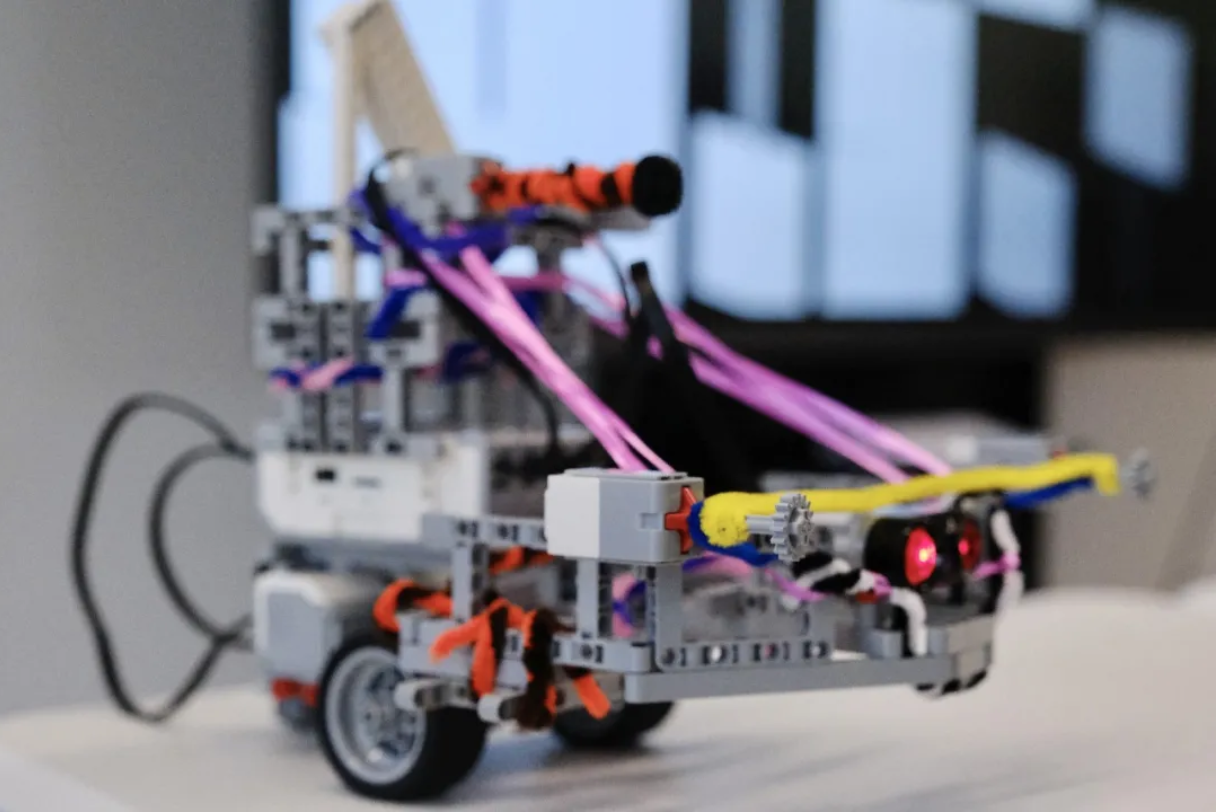
This group of kids took a real life approach to designing a robot for people who suffers from vision loss, because they saw that blind people have difficulties getting around in their lives. They designed a intelligent guide robot based on their understanding existing aids, analysing the advantages, disadvantages and dilemmas. The retractable linkage on the body of the vehicle allows the blind and the trolley not to lose contact. The trolley walks slowly and will issue a left-turn command, step back and turn left when it detects an obstacle, and the trolley will also obey the traffic rules at signalised intersections, so that the red light stops and the green light goes on.
The Project Features
Diverse teaching background
We are a multi-disciplinary team of teachers and students, with backgrouds from mechanical engineering, computing, psychology, education, design and cognitive sciences, which could inspire creativity in a variety of ways, so the children are highly motivated from the start to finish and present their ideas in the final project.
Step-by-step teaching design
The children who participated in the programme had a wide range of ages and familiarity with Lego and programming. Therefore, the camp was also an exploration and challenge of mixed-age teaching. We grouped the students according to their foundation and flexibly, adjusted the content of the activities, setting up task cards and equipments step by step, as well as encouraging students to ask and help each other, independently bridging the gap in knowledge bases, and allowing the children to finding their own partners for the final project through independent recruitment, brilliantly completing the cross-age Group work!
Presentation of results
The course was also designed to take the children through the full project making process, so over the five days we not only focused on the iterative process of learning, but also on the discipline and importance of presentation. Atthe end, the last two days of the course were plannedfor poster making, PowerPoint presentations, group evaluation and mock presentations to give the children an early taste of the free and open learning environment and to enhancetheir communication skills.
Creativity Assessment
Creativity is the core competence of the 21st century and we also wanted to assess the impact of the teaching content on students' creativity and innovation in this activity. The lab used national and international creativity assessment tools to lead the children in fun assessment activities in their free time, and also used micro-happening methods to record individual performance and teamwork skills during the collaborative process as a reference to improvements and adjust teaching and interaction patterns.
Lifelong Learning Profile
The Lifelong Learning Profile is a tool designed by Tsinghua University's Lifelong Learning Lab to record the children's learning process. Compared to the previous paper records, this activity uses a tablet to implement a fully electronic profile, encouraging children to record the details of their learning iterations as they make them, and also to incorporate more content in the process of organising them, giving their own feedback and putting it into words, so that their learning process can be permanently preserved and eventually archived.
The Lifelong Learning Lab of Tsinghua University hopes to not only develop children's programming and model building skills through the camp, but also to inspire engagement and creativity. We strive to tailor our teaching to each individual's personality and knowledge base to make it fun and educational. During the course of the programme, we constantly worked on children's expression and teamwork skills, making and following rules and regulations together, as well as developing good habits from small things like sorting rubbish and tidying up.
There is a limit to the amount of knowledge and things that can be taught in five days, but there are many seeds that can be planted in the children's minds in different ways, and the teachers and parents were amazed at the age-appropriate environmental awareness and humanism shown by the children! We also hope that wherever they are, children will always be curious and creative!
Finally, let's take a look back at the five wonderful days!




